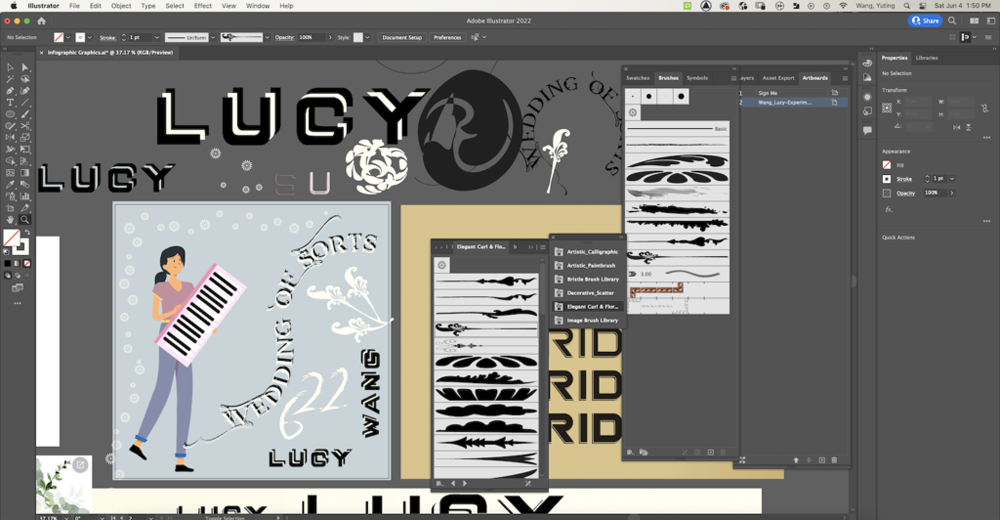Introduction
The Explorations unit encouraged us to find, explore, and expand our passions through choosing a particular skill set related to our elective class to focus on. Throughout the month, we also read the book “Range” by David Epstein, which introduced the important concept that we can cultivate aptitude in a variety of subjects and skills to become generalists, which is another essential form of contributing to society alongside specialists. Connecting this idea to our Explorations project, we chose the skill we wanted to improve upon while considering certain 21st century skills that could work in junction with our project and benefit us in the future. These skills include: Visual literacy, technological literacy, creativity, self direction, high productivity, teaming & collaboration, social and civic responsibility, and risk taking.
As an animation student, I chose to learn about the special effects that are used in creating the appearance of steam and also allow it to look so real. Studio Ghibli’s animations have inspired me since I was elementary-school aged, and one scene that I have the strongest impression of was a bowl of ramen with steam rising, expanding, and reshaping above of it (from Ponyo). I’ve always been curious about how animators portray inanimate things like water to be so lively, and through my explorations work I especially wanted to practice the skill of technological literacy. It can allow me to be more involved in the process of production and understand what goes on behind the scenes.

Process
I divided my project into two mini-projects, which each provided a different way I could practice these new skills. For the first one, I created steam rising over a cup of hot coffee. My second mini-project displayed the steam rising from a volcanic eruption.
To get an idea of what shapes I could draw the steam into as it rises, I looked toward GIFs on the Internet to observe the behavior of steam from hot food and drink and later on, geysers and volcanoes. For this project, I mainly focused on the technical aspect of creating steam, and I’d like to keep experimenting with realistic behaviors of elements like water and fire in the future.
As I began to draw, I used a classic Photoshop brush – the soft round pressure-opacity-sensitive brush – to draw out pieces into the desired shapes, using the color white. This meant I had figures on my black canvas in the shapes of raindrops and campfire stacks.
Then, I applied filters to change the texture of the images in order for it to look more similar to steam. In sequence, I used maximum, surface blur, and finally, the option to render selected layers as clouds (with black and white as the foreground & background colors).
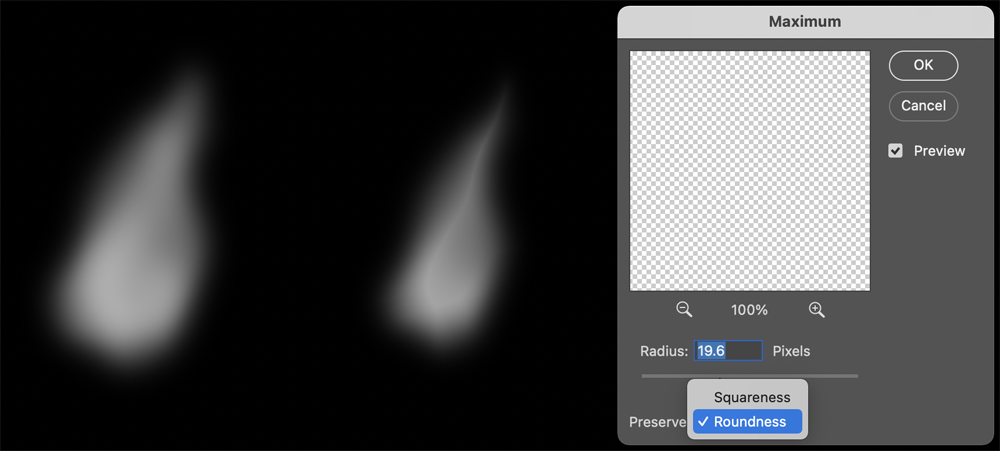
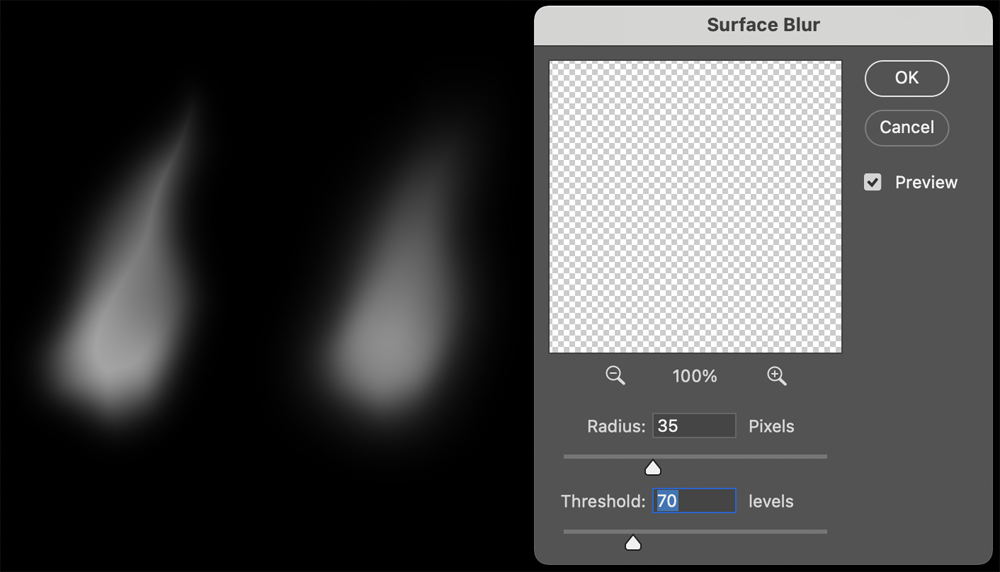
The maximum filter appears to concentrate the shape around a main line or curve. When maximized, the steam layers remind me of the texture you see on a pool’s surface under the sunshine. For the surface blur filter, you can change two factors: the radius and the threshold. Based on what I saw while changing them, a higher threshold value causes the image on the layer to lose its collected shape. It might still appear ‘boxy’ under a low threshold value.
Here is a comparison of the same image layer, just having been adjusted with different effects. The leftmost is the original image, then maximized, blurred, and rendered as a cloud.
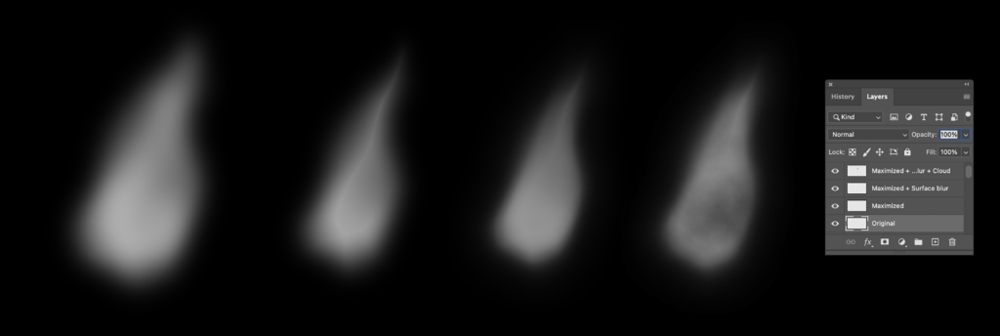
Having these basics down, I was able to draw new shapes of steam and apply these filters, ultimately to discover the assortment of graphics that would make up the most realistic composition. Although this was entirely individual work, I never felt alone, because these steam graphics reminded me of friendly ghosts who accompanied my work!
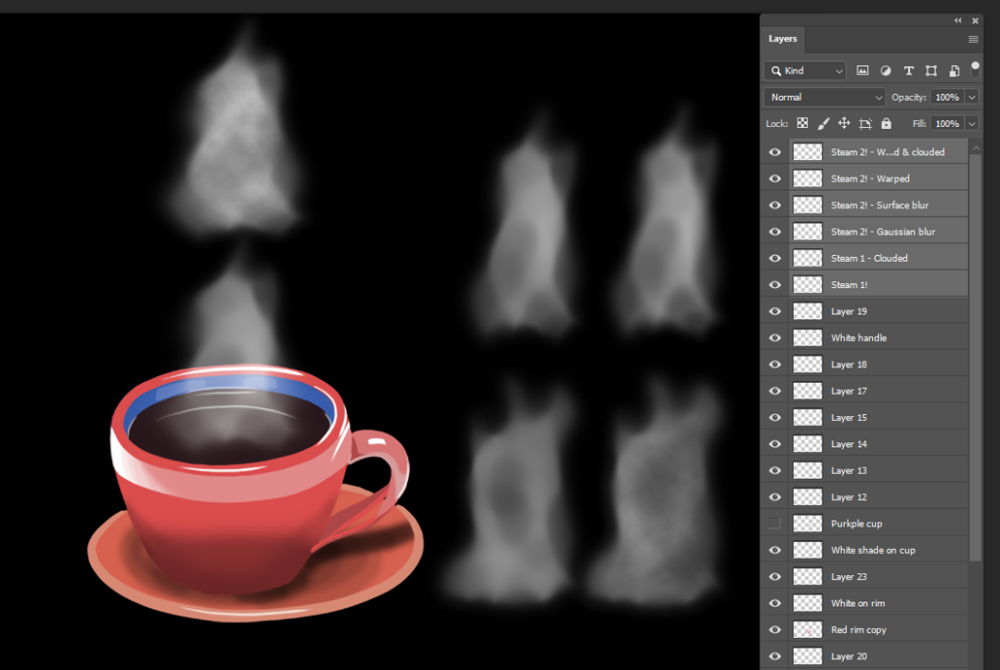
The second mini-project took my exploration beyond the technical aspects of these special effects by delving further into the real-world behavior of a mass of steam. When I started on this portion of my project, I had more opportunities to practice developing the shape of a moving subject, while the technical process was the same as how I had made the coffee animation. I had to think about how the steam and smoke from an explosion would unfurl and fade away, and I tried my best to freehand how I imagined these shapes would look. It’s interesting to see how the shape of the steam progresses, such as in this screenshot below where the first six shapes of steam are placed together for comparison.
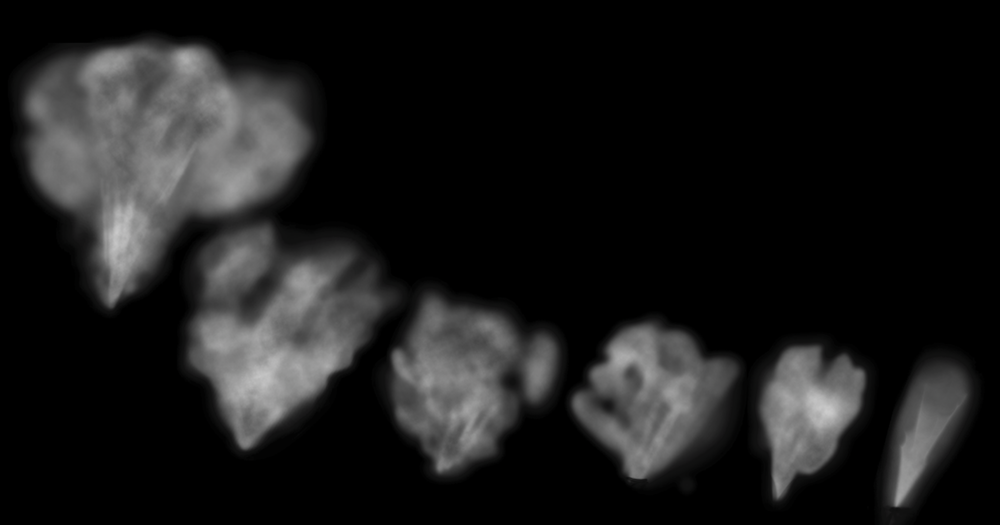
Final products
#1: Coffee Steam
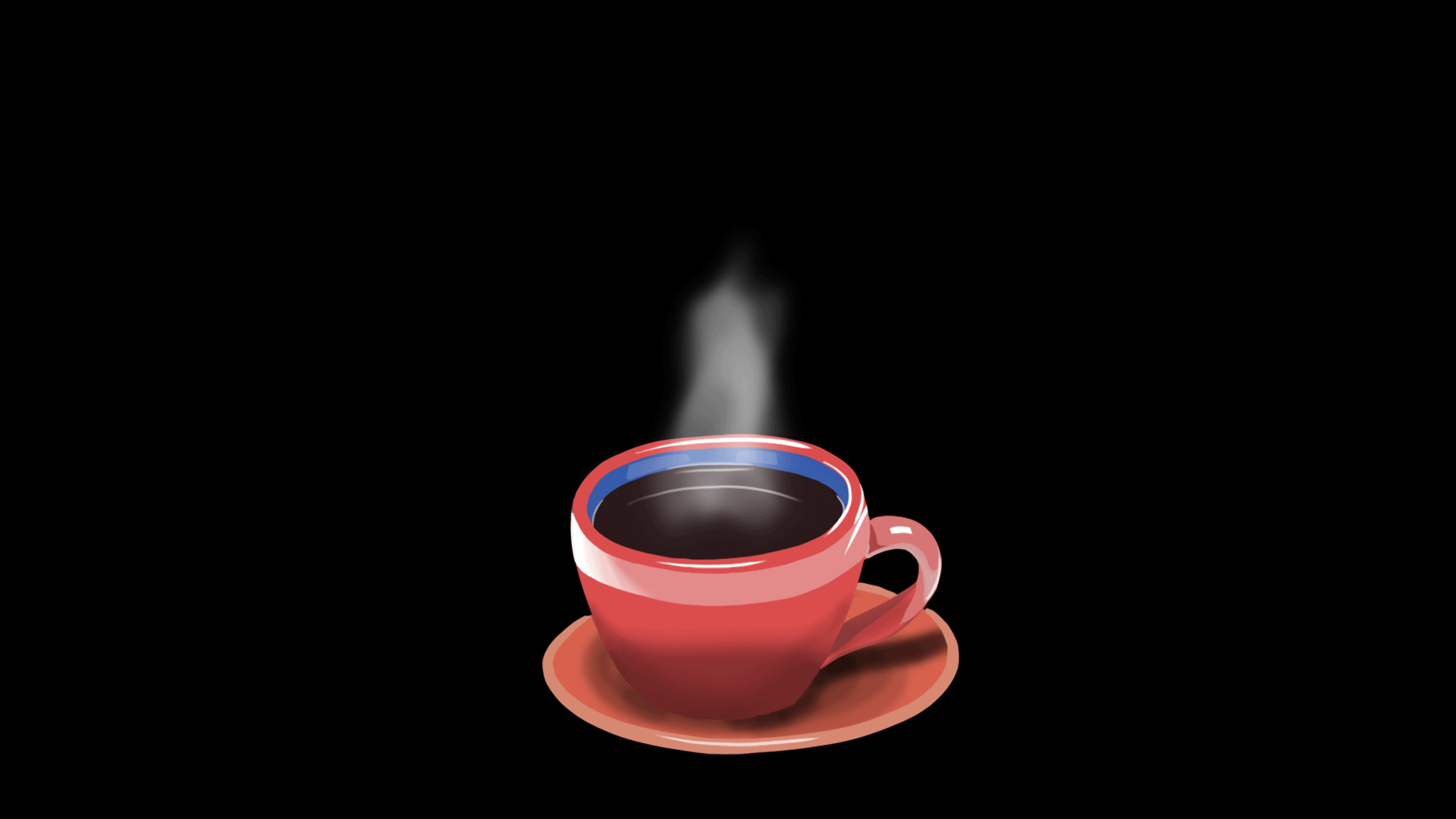
#2: Volcano Explosion
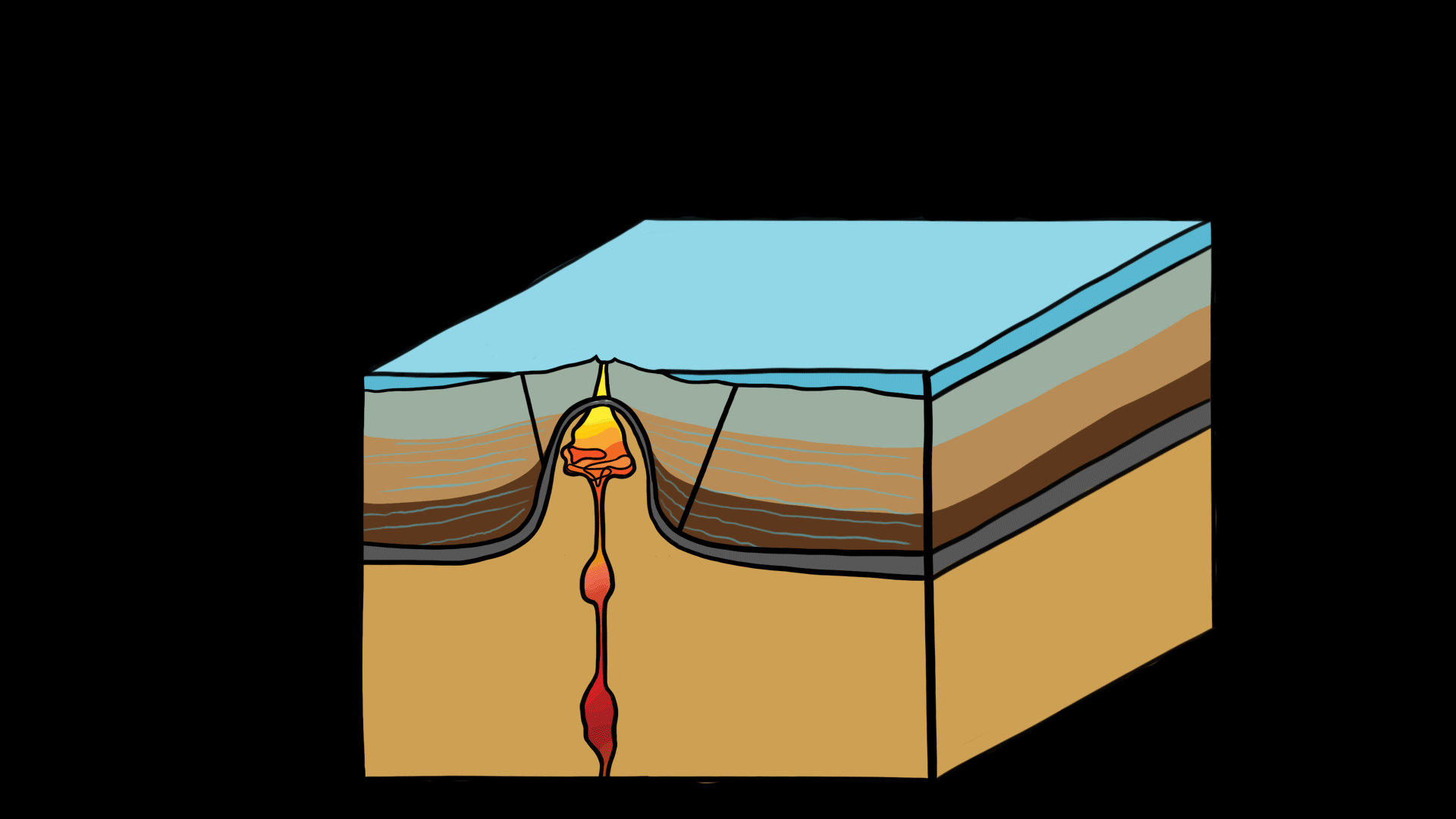
On the final day of our junior year classes at Freestyle, students gave a presentation to the class celebrating their Explorations work. It was really interesting to see the diverse aspects of animation that my classmates focused on, such as rotoscoping a skateboarder’s motion, creating action & fight scenes, and other special effects like the behavior of flames. Here is the link to my Explorations presentation slideshow! It offers an overview of my process, though there is minimal written explanation as intended. Video of my presentation coming soon!
Reflection
In doing this Explorations Project, I valued the space to research whatever I wanted and apply my new skills without having to worry about being expected to achieve a certain level of quality – because no one has worked on the exact same project in the past. I think I benefitted as a digital artist from this project especially in the context of timing. I started my Explorations Project about two weeks before I was to present about it, having spent a few extra weeks finishing my documentary project. This shortage of time was the greatest challenge I met during this unit. For one English reading assignment, a prompt was to create an analogy for the challenges that we faced while working on our projects. I likened this to the Freestyle Europe trip that Ms. P introduced: it seems like a short time to visit many places, but it can still be a fruitful experience. One way to help travelers enjoy their time could be to visit a great number of places within the short duration of the trip for excitement from seeing a diverse range of places. Alternatively, for a slower pace and equal enjoyment, the itinerary could include fewer places while allowing travelers to spend more time on each. This is what I chose to do with my project: I identified two smaller areas I wanted to try working with and produced smaller animations, while still learning a lot about the skill set involved.
Experimental Music
In April, we learned to use virtual instrument plugins in Pro Tools to create beats with diverse sounds, all from a single MIDI keyboard. Taking these skills, we created an original piece of experimental music in June. As a pianist, I’ve only had experience with one main instrument, and this project presented me with the opportunity to explore with so many new sounds.
Please listen below!
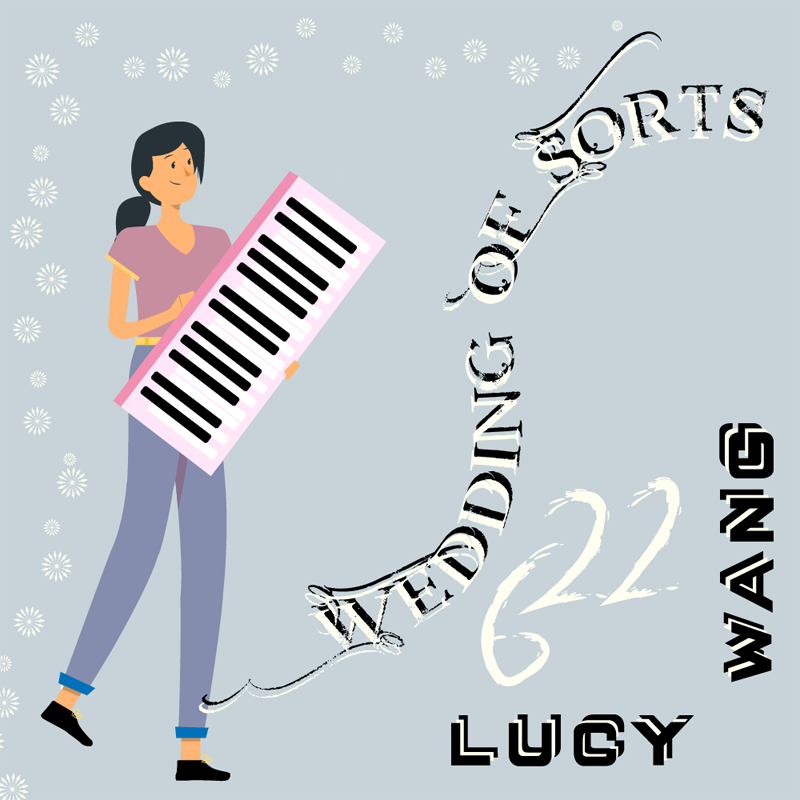
For this project I originally wanted to make a Lofi beat of my own. Listening to YouTube compilations has helped me to stay calm in the face of stress over the school year, and they are fascinating to me because I’ve always wondered how their writers come up with these cheerful or melancholic tunes. Lofi songs are something I’d love to experiment with in the future as well. My final song is not a typical Lofi beat, but I had fun playing new sounds and have several things I am proud of. Music composition is a skill that is difficult for me to practice; though in the past it was a cause of embarrassment, with this project I let myself have fun working with a completely blank canvas. I am most proud of being able to express certain moods through music, especially in a limited amount of time. The different sounds that I employed helped to create these moods: the sound of ocean waves, sand falling, pipes, and techno bass, among others. I used piano to create the melody under a soft ambience setting.
I listened back to my song to identify and analyze different passages. There is an introduction marked by the beginning drum beats and swaying sounds of sand. And then, a section that is hopeful, reminding me of a warm, sunshine-lit path. A third section is wistful with high notes. You feel a moment of silence in the heart with a rapid series of what sounds like bottle clinks, which inspired the title for my song. A fourth section introduces more drama into the story with bursts of steam, trumpet, and techno pops. The piece ends on an unresolved note – or perhaps simply resolved in a non-traditional sense – and incorporates some Oriental feeling.
It was really difficult to ‘think up’ original music, with tunes and beats that have never been used before. I took some tunes from the music that inspired me and played around with them on my piano at home. When I found something that sounded pleasant to me, I recorded it and could play it again on the MIDI keyboard for any instrument when I listened back to the recording in the Digital Media classroom.
Here is a portion of the Pro Tools interface showing MIDI notes for different instrument plugins. Our computer setup is connected with a MIDI keyboard, which doesn’t create physical sounds when played, but creates notes when used in tandem with virtual instrument plugins.

Check out the Personal Productions: Audio Productions page to see what some of the plugins we used were!
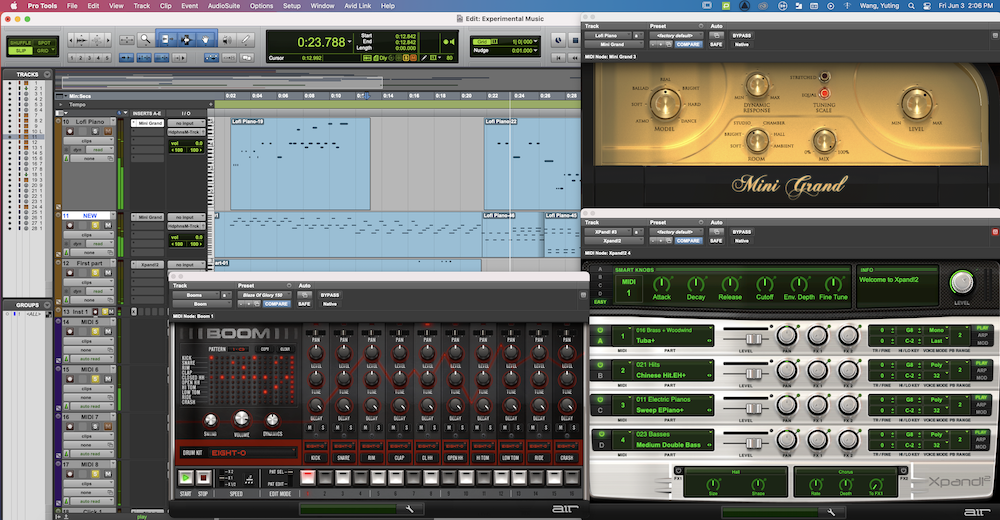
In learning how to use Virtual Instruments for music production, I valued the freedom of having multiple tools available and the flexibility to create something from any place.
Creating album art in Illustrator
I felt that a wedding ambiance would represent the experimental music in an interesting way. To achieve this look, I used pale shades of blue and cream to create a nostalgic image with a down-to-earth feel.
Thank you to Slidesgo contributors (Freepik) for the image inspiration!
Illustrator also gives me a lot of freedom to recreate graphics. When there isn’t a font that fits what I want to look for, I can make a vector graphic for the words instead of using text.
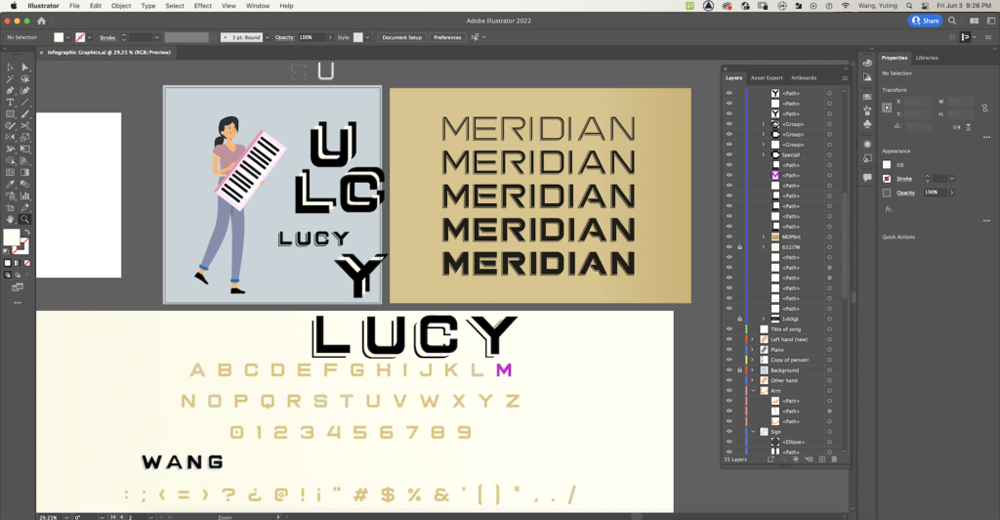
It was really fun to explore using the different brush patterns that Illustrator offers! This messy interface shows how one can have hands-on work even working with digital applications!
